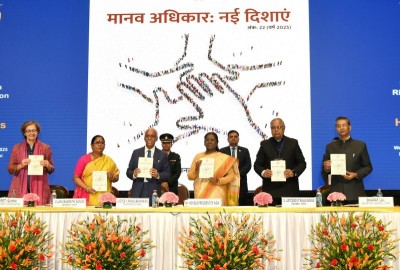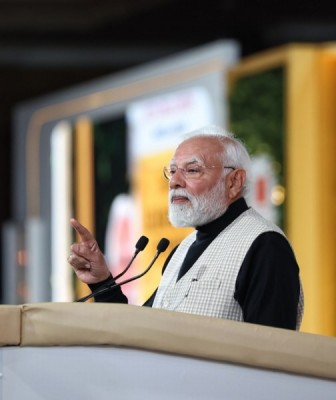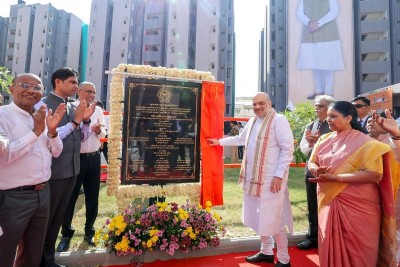
Odisha: Shrinking Battlefront
Before this incident, the last major incident (involving three or more casualties) in Odisha in which Security Forces (SFs) were at the receiving end, took place on August 27, 2013, in Koraput District, where four BSF personnel were killed in a landmine blast on a busy National Highway. In the two years between these two major incidents, Odisha witnessed only four SF fatalities, including a village guard and a Special Police Officer (SPO, a member of an auxiliary force raised to aid the Police).
According to the South Asia Terrorism Portal (SATP) database, till August 30, 2015, 20 persons including 10 civilians, four SF personnel and six Maoists have been killed in Odisha in Left Wing Extremism (LWE)-related incidents, in comparison to 33 persons, including 24 civilians, one SF trooper and eight Maoists, killed over the same period in 2014. Though four months remain in 2015, the decline in fatalities conforms to the broader declining trend in LWE-related violence in Odisha since 2010.
What is significant, however, is that more than half of the fatalities in 2015 have occurred in Malkangiri District while, so far, there is just one fatality in Koraput. This is crucial, since Malkangiri and Koraput were long in a vice-like Maoist grip.
The most significant factor in these trends was Sabyasachi Panda's expulsion by the Maoists in August 2012 and his subsequent arrest on July 17, 2014. Panda had long dominated Maoist activities in Odisha, and his neutralization considerably weakened the rebel group's activities in Kandhamal, Ganjam Gajapati and Rayagada Districts. The Maoists did retain their strength in Koraput and Malkangiri, and continued unsuccessfully to try to build up a new 'corridor' from Chhattisgarh to Jharkhand through Nuapada, Balangir, Sambalpur and Deogarh, but were left with a residual 'core area' that covered just Koraput and Malkangiri. Data on various parameters linked to Maoist activities now suggests that their operations have diminished drastically in Koraput, especially after large-scale desertion of cadres of the Narayanpatna-basedChasi Mulia Adivasi Sangha (CMAS), a Maoist front organisation in Koraput, in 2013, capped by the surrender of CMAS 'president' Nachika Linga on October 28, 2014. This has left the Maoists clinging on in Malkangiri, while they direct some distracting efforts towards a few other locations in the State. Among the most significant incidents in the State in 2015 were:
August 17, 2015: Maoists killed a tribal, identified as Gurumurthy Madhi, suspecting him to be police informer, and left his body with some posters near Telarai under Motu Police Station limits in Malkangiri District.
June 3, 2015: Fearing the Maoists, around 60 tribal families of the cut off region of theBalimela Reservoir in Malkangiri District left their village and sought security from the District administration. The panic-stricken villagers said the Maoists had killed two villagers a few days previously, suspecting them to be Police informers, set several homes on fire, and threatened to kill them.
April 14, 2015: The Maoists abducted 11 persons, including a former 'chairman' of apanchayat samiti [elected village self-government committee] in Malkangiri District and released them on April 16 after holding a 'people's court' where they thrashed three of the abductees, including the local sarpanch (elected village head) for 'helping the Police'.
Malkangiri, located on the troubled tri-junction of Odisha, Chhattisgarh and Andhra Pradesh, has always been a tough challenge and recorded several major attacks on SFs in the past. Though the Maoists dominate virtually the entire District, the 'cut off area' - 150-odd villages of the Kudumulu Gumma Block separated from the rest of the Block by the Balimela Reservoir - have been particularly problematic. This area, sandwiched between the Reservoir on one side and a hill tract on the other, is highly inaccessible. An approach from the Reservoir is possible only by motorised boats, and is highly exposed (as evidenced by the June 29, 2008, attack that killed 38 SF personnel). The circuitous route from the other side is made even difficult by the absence of a bridge over the Gurupriya River at Janbai; and the Maoists have thwarted every attempt to construct a bridge at this location. In the latest round, construction work has finally started with high security cover, and the BSF has set up a base camp at Janbai. This has brought the SFs much too close for comfort for the Maoists, who fear that, if the bridge is completed, the cut-off area may no longer remain a safe haven.
It is useful to recall that on February 10, 2012, within 20 days of establishment of a base camp at Janbai, four BSF personnel, including commandant Jeevan Ram Khaswan, were killed in an ambush by the Maoists, when the BSF personnel were on their way to Chitrakonda from their camp at Balimela. BSF has, however, managed to avoid any such attack in Malkangiri since. In fact, BSF has suffered just three major attacks in Odisha since its deployment in anti-Maoist operations in April 2010: the February 10, 2012, incident; the August 27, 2013, attack in which four BSF personnel were killed and another three were injured in a landmine blast in the Sunki Ghat area under the Pottangi Police Station of Koraput District; and the latest ambush on August 26 at Janbai. Significantly, in all three incidents over three and a half years, the Maoists used landmines to throw the SF units off guard.
As the battlefront moves closer to the last remaining Maoist comfort zone in Odisha, SFs have slowly started denting the Maoist network in Malkangiri. Thus, on July 31, 2015, three Maoists, including two females, were killed in an encounter with the Special Operations Group (SOG) and District Voluntary Force (DVF) of the Odisha Police in Burudi Forest near Tandki village in Malkangiri. Acting on intelligence inputs that around 20 Maoists were holding a meeting at the remote spot as part of their 'Martyrs' week' commemoration SFs raided the area. As the SFs approached the spot the Maoists opened fire. The three Maoists were killed in retaliatory fire and the camp was dismantled. Three country-made guns, one INSAS rifle, a Self-Loading Rifle (SLR), live ammunition, grenades, as well as materials including kitbags and Maoist literature, were seized from the spot. The slain Maoists are yet to be identified.
As the Maoists come under sustained pressure in the Andhra-Odisha Border (AOB) region, their leadership has reportedly formed a new committee, the 'Malkangiri-Visakha-Koraput Divisional Committee', with an experienced leader at the helm, in an attempt to strengthen the rank and file and restore organisational capacities. According to sources, the new committee was formed after the visit of Maoist central committee (CC) leaders to the Visakha Agency in Andhra Pradesh in May-June 2015. Around 14 leaders from the Dandakaranya Zonal Committee of Chhattisgarh, including the head of the Maoist Central Military Commission, Namballa Kesava Rao aliasGanganna, and Central Regional Bureau (CRB) chief Katakam Sudarsan alias Anand, are learned to have visited the District. A few days after their visit, another team of nine members interacted with squads and area committees in the AOB region.
As Maoists struggle to retain their traditional strongholds in Odisha, they appear to be adopting a range of diversionary tactics, with a civilian killing in Angul District, just the second incident in the District, where the first incident was recorded in 2008); and two civilians killed in Kalahandi District, where the last such killing was recorded in 2011. The Maoists have also been involved in 13 exchange of fire incidents in Odisha in 2015 (data till August 30) - one in Deogarh, two in Koraput, three each in Malkangiri and Kandhamal, and four in Kalahandi. The Maoists also engineered one explosion each in Rayagada, Balangir and Koraput Districts, and two explosions in Malkangiri District in 2015.
As the Odisha State Police and Government progressively come to accept ownership of the problem of the Maoist insurgency and actively cooperate and coordinate their operations with the available Central Forces deployed in the State, there has been a dramatic consolidation. Enormous and coordinated pressure is now being exerted against the residual Maoist strength, particularly in Malkangiri and the cut-off areas within the District, even as the Maoist networks unravel in other afflicted Districts of the State. If operations are sustained, and progressively backed by an outreach of civil governance in long-neglected regions, a Maoist comeback will become progressively more difficult. The Maoists have been beaten back virtually across their imagined 'Red Corridor'. This, their leadership concedes, is a critical moment for their movement. Nevertheless, the Maoists have demonstrated enormous resilience in the past and there is, consequently, no space for complacence on the part of the state.
Support Our Journalism
We cannot do without you.. your contribution supports unbiased journalism
IBNS is not driven by any ism- not wokeism, not racism, not skewed secularism, not hyper right-wing or left liberal ideals, nor by any hardline religious beliefs or hyper nationalism. We want to serve you good old objective news, as they are. We do not judge or preach. We let people decide for themselves. We only try to present factual and well-sourced news.







